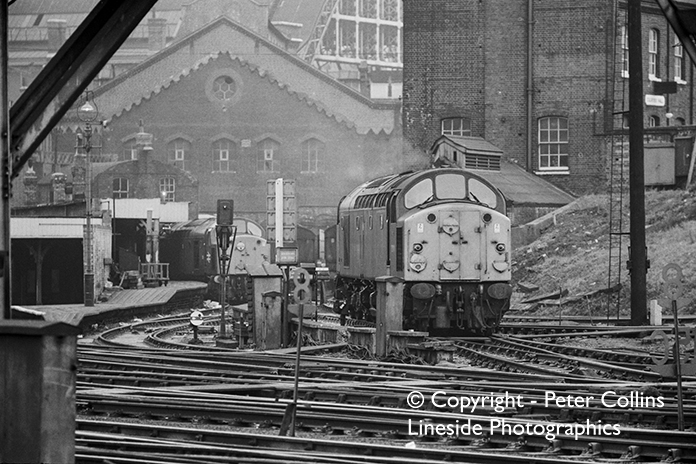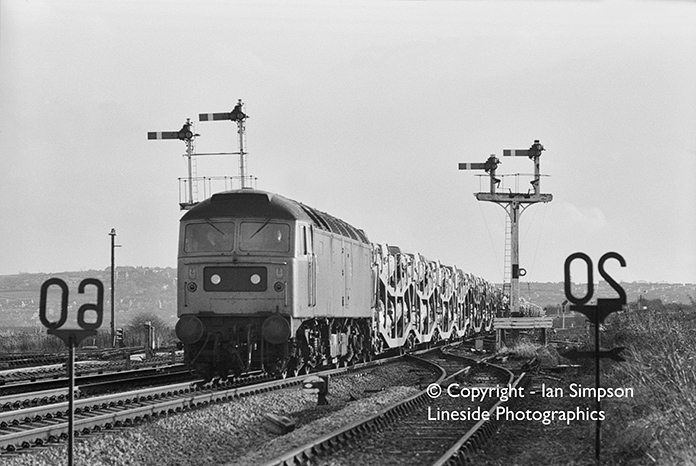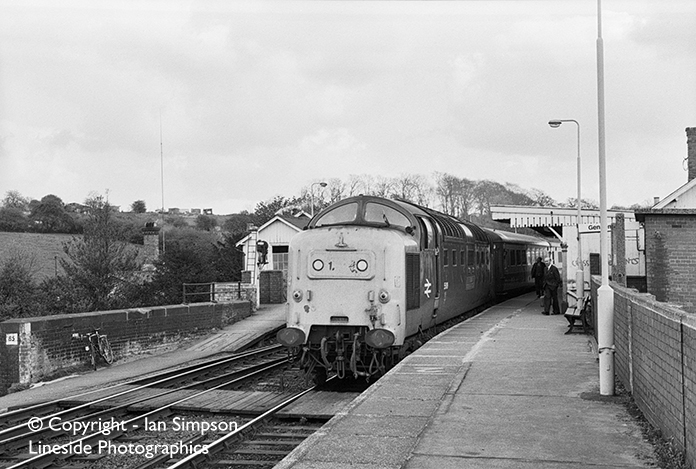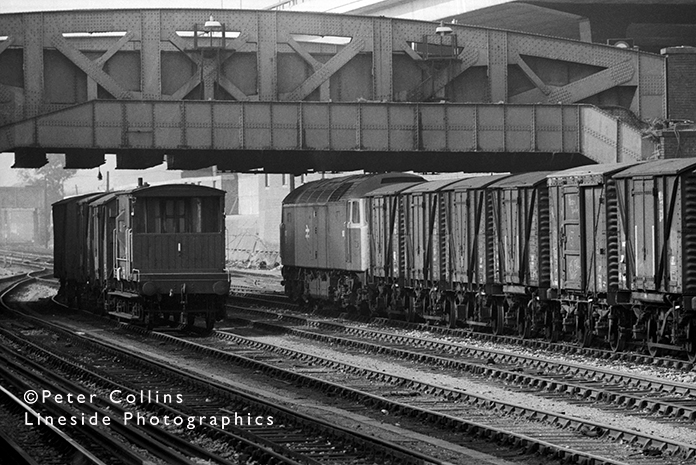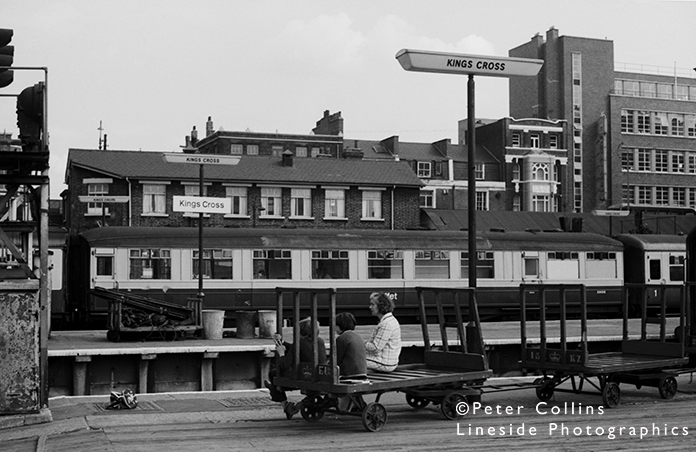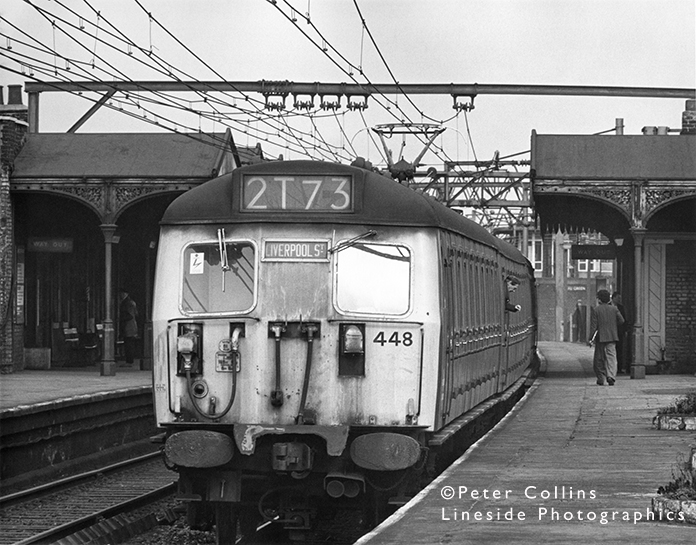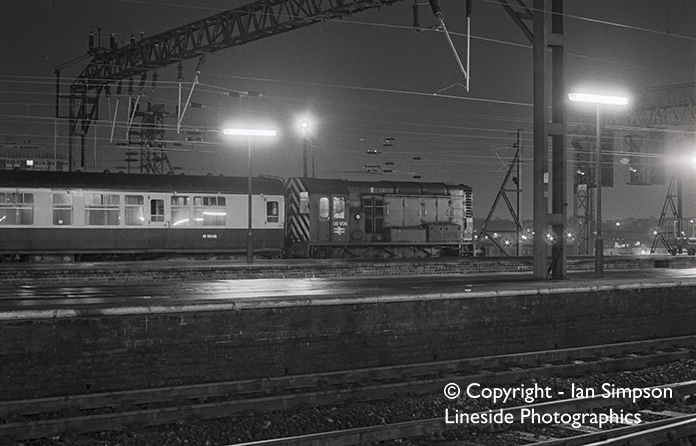
Class 08 ‘Gronk’ 08906 shunts coaching stock preparing for the next day’s trains to the South West and Great Yarmouth from Manchester Piccadilly. The photo dates from the late 1970s or early 1980s.
Night-time shunting at Edgeley Carriage Sidings
‘Gronk’ 08906 shunts coaches during the night at Stockport Edgeley Carriage Sidings preparing rakes of coaches for the next day’s Saturday Only services from Manchester to the South West (Newquay and Paignton) and Great Yarmouth. Three sets of coaches were stored at Stockport Carriage Sidings during the week in-between the Saturday services. Occasionally the sets would be used during the week, one being used on an un-advertised, early morning service from Manchester Piccadilly to London Euston (with an early evening return). The stock consisted mainly of Mk1 carriages (with some Mk.2a/b/c’s).
The Carriage Sidings had 8 main sidings, with the rakes split between them. The station pilot would then make up the stock into trains and leave them in the station loops or centre roads for collection by a Longsight engine (normally an electric) to run them as ECS to Piccadilly station.
Stockport station was still a very active hub for parcels traffic now, so the station pilot was kept busy during the night shunting parcels and news’ vans between services from various parts of the North and South. On the occasions when a NPCC or coach was declared as faulty they would be stored at Edgeley sidings until they could be attached to a service for Crewe or Horwich where they could be repaired. The York-Shrewsbury mail train changed engines at Stockport and became famous for providing regular Class 40 haulage for bashers.
A new collection of night-time photographs will be available soon on the Lineside Photographics website. All images are available as prints and as wall mounted products. Digital downloads are also available for all our images.

